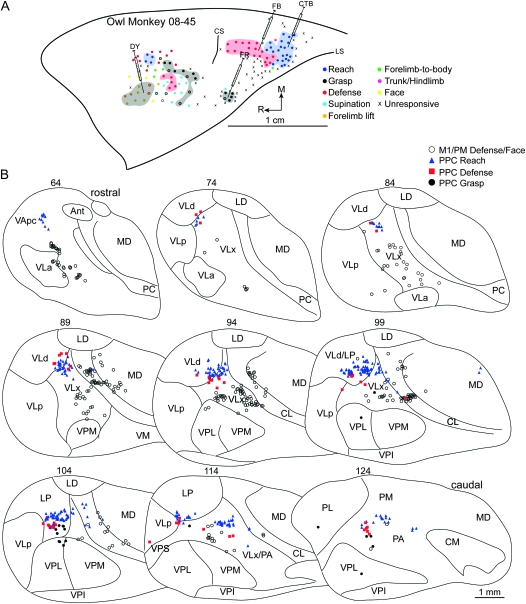Figure 6.
(A) Map of multijoint forelimb movements evoked with intracortical electrical stimulation from owl monkey case 08-45. Microelectrode penetration sites are color coded to reflect evoked movements. Sites that evoked dual movements are represented in 2 colors derived from the color code in the figure legend. Major functional zones are highlighted. M1/PM was primarily characterized by grasp, wrist supination, and defense zones. A reach zone was rostral and medial in M1/PM, whereas concurrent face and forelimb movements were evoked from the same approximate rostral extent but lateral. In PPC, reach, defense, and grasp zones were organized in a caudomedial to rostrolateral progression. Reach and defense zones bordered one another, whereas unresponsive sites separated the defense and grasp zones of PPC. Four retrograde tracers were injected: DY into M1/PM near sites that evoked concurrent defensive forelimb movements and aggressive face gestures, CTB into PPC reach zone, FB into PPC defense zone, FR into PPC grasp zone. (B) Distributions of labeled cells in a series of coronal thalamic sections (40 μm) from the same case. A limited number of cells were labeled from the PPC grasp zone because a small volume of FR was purposely injected to minimize tracer spread beyond this limited target zone.

